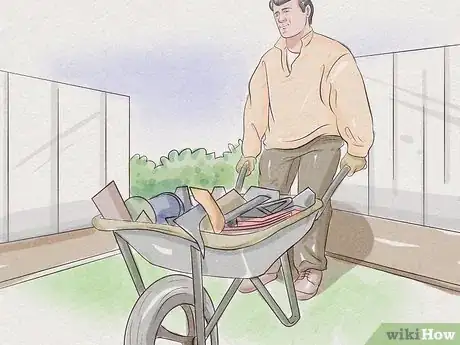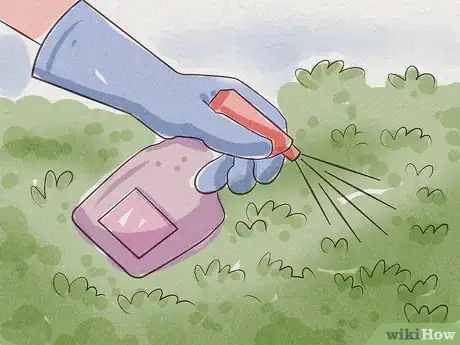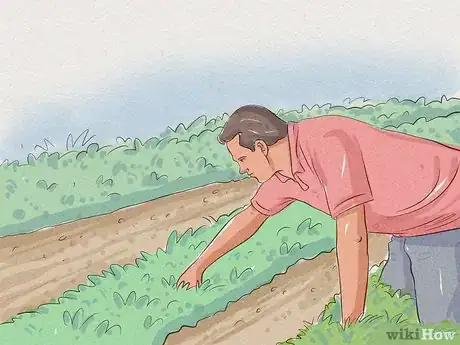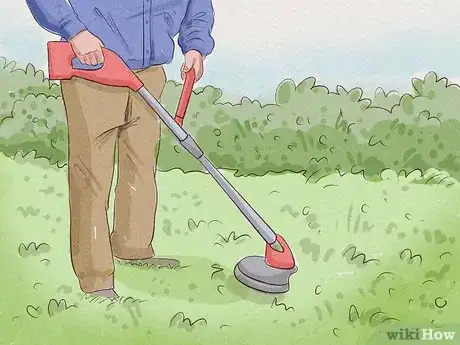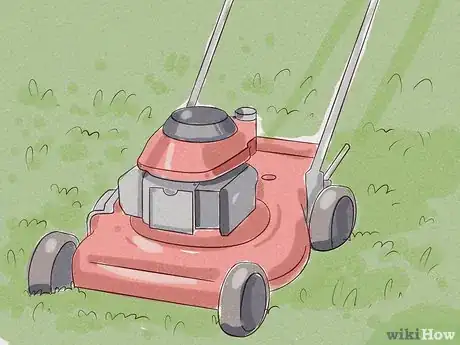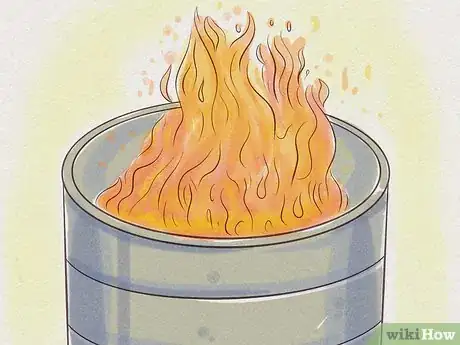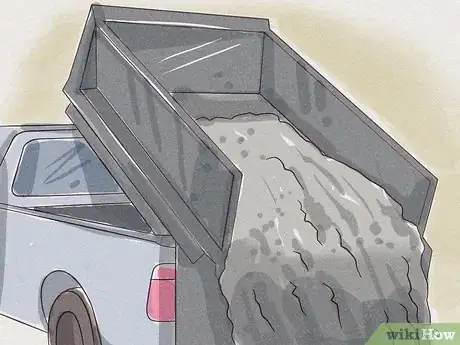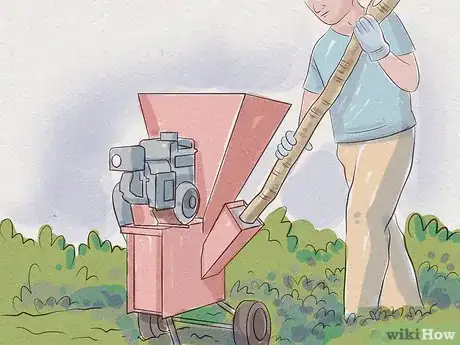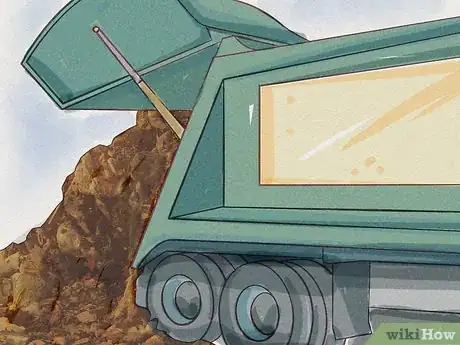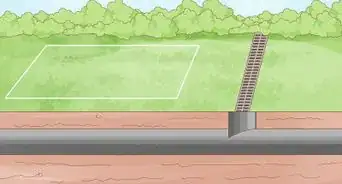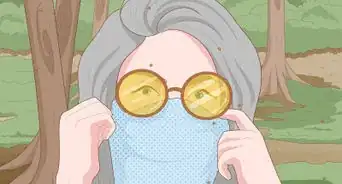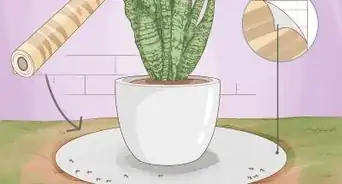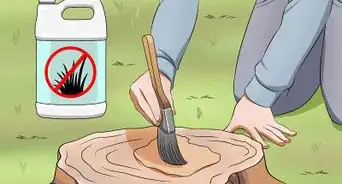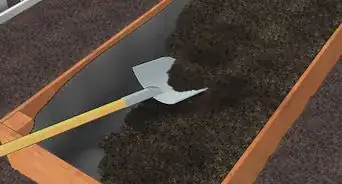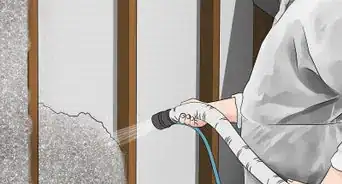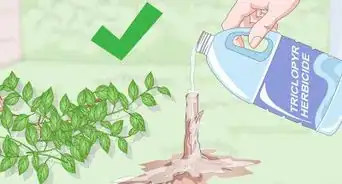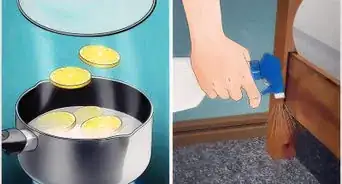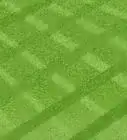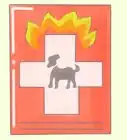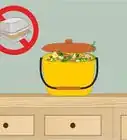This article was co-authored by Lauren Kurtz. Lauren Kurtz is a Naturalist and Horticultural Specialist. Lauren has worked for Aurora, Colorado managing the Water-Wise Garden at Aurora Municipal Center for the Water Conservation Department. She earned a BA in Environmental and Sustainability Studies from Western Michigan University in 2014.
There are 9 references cited in this article, which can be found at the bottom of the page.
This article has been viewed 126,150 times.
Land overgrown with weeds, grass, and small bushes can be intimidating to clear out. At the beginning, you may not know where to start or how to best clean the underbrush. Knowing how to prepare and properly clear underbrush can help you do so quickly and effectively. Clear your overgrown yard area in stages to keep yourself on-track and avoid feeling overwhelmed.
Steps
Preparing the Area
-
1Avoid disturbing the soil before you begin. Heavy digging can bring weed seeds to the surface and worsen your underbrush problem. Weed seeds can lay dormant for years before growing. Wait until you're ready to work before touching the soil.[1]
- Wait to till the soil until you have cleared the underbrush, as hoeing weed-prone areas can bring up dormant seeds.
-
2Remove any debris from the area. Walk around the area you plan to clear with a trash bag, and throw out any trash you find. Use a wheelbarrow to remove large items, like tires, furniture, or tree branches.Advertisement
-
3Mark trees, shrubs, or bushes you intend to remove. Using garden tape, tie a marker around plants you wish to remove so you don't cut down useful plants accidentally. Alternatively, you could also mark the plants you intend to keep. Mark whichever option is lower.
-
4Weaken weeds with herbicides. Apply a broadleaf herbicide (used for many weed species) directly to the weeds, and avoid spraying the herbicide on plants you want to keep. Use herbicide on a sunny, windless day so only the weeds are killed. Plan on using the herbicide at least a week before you clear the underbrush.[2]
- Remove any toys, clothing, or furniture from the area before you spray.[3]
- Call poison control if the product is used in ways it wasn't intended for (especially if the herbicide was ingested).[4]
- If you have large patches of weed growth, attach a herbicide sprayer to your garden hose to apply a large amount of herbicide at once.
-
5Wear long-sleeved, protective clothing while clearing underbrush. Clearing overgrown plants puts you at-risk of touching poison ivy or oak. Wear clothing that covers your skin from direct plant contact. A long-sleeve shirt, a long pair of pants, work boots, and safety goggles will all keep you protected from dangerous plants.
- If clearing underbrush in the summer, work in the morning or evening when temperatures will be lowest.
- Wear sunscreen with at least SPF 30 to protect any exposed skin from the sun while working.
Cutting Weeds, Grasses and Shrubs
-
1Cut back weeds in a straight row. Pull weeds in rows to keep organized about what you've already pulled. You can use a weed whacker or you can pull by hand. After you've finished pulling the weeds, rake them up and dispose of them in a trash bag or wheelbarrow.
- The best time to pull weeds is after rainfall, when moisture in the soil will make pulling weeds easier.[5]
-
2Clear unruly grasses or small plants with a line trimmer. Hold the head of the line trimmer level to trim the grass or plants evenly. If the string breaks, run the trimmer at full speed and bump it against the ground to extend the line. Cut until the grass is even and no longer an obstruction.[6]
-
3Remove or prune your shrubs and bushes. Locate shrubs or bushes you marked to remove, and cut back the branches and stems in small, manageable sections. Bundle the sections together with twine and dispose of them in a trash bag. When you dig up the roots of the plant, pull it out entirely and haul it out using a wheelbarrow.
- Once you've removed the shrub or bush, fill the hole with topsoil.
-
4Mow your area using the highest setting on your lawn mower. Use a lawn mower as a finishing touch on large areas of grass. Mow in rows or columns to avoid missing any spots.[7] Rake the yard to remove grass clippings and dispose of them as yard waste.
- As an extra precaution, mow the lawn again the next day on a lower setting. After that, mow the lawn as needed for maintenance.
-
5Till the soil. Till any areas you want to re-plant with a garden tiller. Start at one end of the area and till in even rows, much like when mowing the lawn. Don't go back over a row or excessively till the area. Excessive tilling can compact the soil and limit its fertility.[8]
Disposing of Yard Waste
-
1Conduct a controlled burn if permissible. Stack up any cut brush (such as weeds, grass clippings, or shrubs) in a pile far from flammable objects to prepare it for burning. Burn the underbrush with a propane torch or flamer. Talk with your local fire department about local policies and gain approval for the burn before you start. Obtain a burn permit if necessary.
- Practice safety measures around fire to avoid losing control of it.
-
2Start a compost pile. Use leaves or grass clippings in a compost pile to enrich soil for plants later on. To start composting, construct a compost bin and fill it with layers of carbon-rich and nitrogen rich-materials. Moisten the three layers and use it as needed when planting or gardening.[9]
-
3The time from that it takes raw material to become decomposed compost can be 1 season or more. Avoid putting debris with seeds into your compost, as this will make any weed issues worse.
- Carbon-rich materials include: straw, leaves, wood chips, dead flowers, or shredded newspapers.
- Nitrogen-rich materials include: grass clippings, vegetable peelings, fruit rinds, or animal manure.
-
4Visit your local dump. If you own or can rent a truck, load up the back with trash bags of debris and bring them to your local dump. Call the dump beforehand to ask if they accept yard waste materials. Ask them about fees and whether they charge a flat fee or charge by weight.
-
5Rent a wood chipper. If you removed a lot of shrubs from the area, consider renting a wood chipper to dispose of debris manageably. Typically, gardening maintenance companies rent out wood chippers for a daily fee. Use the resulting wood chips as carbon-rich materials in your compost.
- Take extreme caution when using wood chippers, and follow the machine instructions carefully.
-
6Contact waste management. If you have a lot of yard waste, call your local sanitation department and ask how much they charge for pickups. Waste management will take your plant debris and repurpose it as mulch. Typically, sanitation departments limit what they will and won't pick up, so specify what debris you have on the phone.
- Keep your debris organized by size and material to make things easier for your local sanitation department.
- Alternatively, call a yard waste removal crew who can haul the waste away for a fee.
Community Q&A
-
QuestionI have land that has a lot of thorn debris growing in the ground, how do I get rid of them on 10 acres?
 DonaganTop AnswererRent or buy a brush mower ("bush hog"). It's basically a heavy-duty lawn mower.
DonaganTop AnswererRent or buy a brush mower ("bush hog"). It's basically a heavy-duty lawn mower.
Things You'll Need
- Work gloves
- Work boots
- Wheelbarrow
- Trash bags
- Garden tape
- Shovels
- Lawn mower
- Rake
- Line trimmer
- Garden tiller
- Herbicide
- Propane torch
- Twine
- Garden hose
References
- ↑ http://extension.oregonstate.edu/gardening/how-long-do-weed-seeds-survive-soil
- ↑ http://www.garden-counselor-lawn-care.com/weed-killer.html
- ↑ http://www.sustainablebabysteps.com/herbicide-toxicity.html
- ↑ http://www.nytimes.com/health/guides/poison/roundup-grass-and-weed-killer-poisoning/overview.html
- ↑ http://www.chicagonow.com/chicago-garden/2010/06/best-time-to-pull-weeds-in-the-garden/
- ↑ http://www.popularmechanics.com/home/tools/reviews/a9608/how-to-use-a-string-trimmer-like-a-pro-16016525/
- ↑ https://www.thisoldhouse.com/how-to/how-to-mow-lawn
- ↑ https://www.youtube.com/watch?v=z9_s1zm-muY
- ↑ https://www.epa.gov/recycle/composting-home
About This Article
To clear underbrush, start by removing weeds with a weed whacker or by hand, working in straight rows so it's easy to keep track of what you've already cleared out. Then, use a line trimmer to trim the grass and small plants in the area so everything is short and level. Next, prune and dig up any shrubs and bushes in the area that you want to remove and fill in the leftover holes with topsoil. Finally, mow the area using the highest setting on your lawn mower before tilling the soil with a garden tiller. To learn how to dispose of yard waste as you're clearing the underbrush, scroll down!

